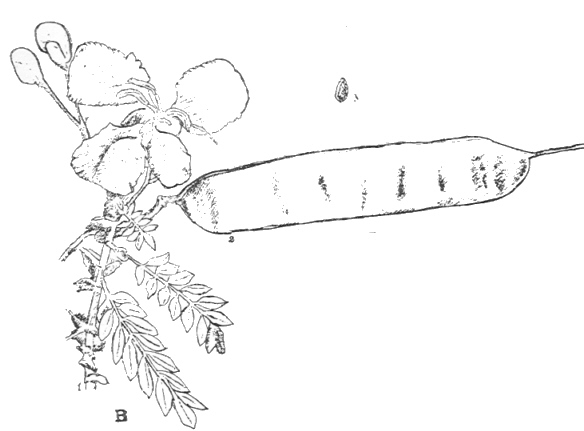

Zitierweise / cite as:
Carakasaṃhitā: Ausgewählte Texte aus der Carakasaṃhitā / übersetzt und erläutert von Alois Payer <1944 - >. -- Anhang A: Pflanzenbeschreibungen. -- Senna auriculata (L.) Roxb. -- Fassung vom 2007-07-27. -- URL: http://www.payer.de/ayurveda/pflanzen/senna_auriculata.htm
Erstmals publiziert: 2007-07-27
Überarbeitungen:
Anlass: Lehrveranstaltung SS 2007
©opyright: Dieser Text steht der Allgemeinheit zur Verfügung. Eine Verwertung in Publikationen, die über übliche Zitate hinausgeht, bedarf der ausdrücklichen Genehmigung des Verfassers
Dieser Text ist Teil der Abteilung Sanskrit von Tüpfli's Global Village Library
WARNUNG: dies ist der Versuch einer
Übersetzung und Interpretation eines altindischen Textes. Es ist keine
medizinische Anleitung. Vor dem Gebrauch aller hier genannten Heilmittel wird
darum ausdrücklich gewarnt. Nur ein erfahrener, gut ausgebildeter ayurvedischer
Arzt kann Verschreibungen und Behandlungen machen!
Falls Sie die diakritischen Zeichen nicht dargestellt bekommen, installieren Sie eine Schrift mit Diakritika wie z.B. Tahoma.
Verwendete und zitierte Werke siehe: http://www.payer.de/ayurveda/caraka0001.htm

Abb.: Senna auriculata (L.) Roxb.
[Bildquelle: Kirtikar-Basu, ©1918]
Drury:
"Cassia auriculata (Linn.) Do. Averie, Tam. Turwer, Hind. Tanghedu, Tel.
Description.—Shrub; young branches, petioles, and peduncles pubescent; leaflets 8-12 pairs, with a gland between each pair, oval, obtuse or retuse, mucronate, upper side glabrous, under slightly pubescent; racemes axillary, nearly as long as the leaves, many-flowered, approximated towards the ends of the branches; pedicels compressed; sepals slightly hairy; legumes compressed, straight; flowers 3-5 together, bright yellow. Ft. Oct.—Dec.— W. & A. Prod. i. 290.—Senna auriculata, Roxb. Flor. Ind. ii. 349.-----Common in the Peninsula.
Medical Uses.—The smooth flattish seeds arc pointed at one end, and vary in colour from brown to dull olive. The bark is highly astringent, and is employed in the place of oak-bark for gargles, enemas, &c, and has been found a most efficient substitute. Like as in other species, the seeds are a valued local application in that form of purulent ophthalmia known as " country sore eyes."— Pharm. of India.
Economic Uses.—A spirituous liquor is prepared in some parts of the country by adding the bruised hark to a solution of molasses, and allowing the mixture to ferment The astringent bark is much used by the natives for tanning leather, and to dye it of a buff colour. Workers in iron employ the root in tempering iron with steel Tooth-brushes are made from the branches.—Ainslie. Roxb."
[Quelle: Drury, Heber <1819 - 1872>: The useful plants of India : with notices of their chief value in commerce, medicine, and the arts. -- 2d ed. with additions and corrections. London : Allen, 1873. -- xvi, 512 p. ; 22 cm. -- s.v.]